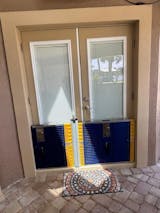It's important to know what type of protection you have against losses due to flooding. Standard homeowners and renters insurance typically don’t provide flood coverage, so the risks associated with this unexpected event could be considerable for those without it. Here's what to know about flood insurance and what is and isn't usually covered under most policies.
What Is Flood Insurance?
Flood insurance provides financial relief if one's home and belongings are damaged due to a flood, helping to ease some of the burdens on homeowners and the members of their household. The insurance is provided through the National Flood Insurance Program, or NFIP, an entity that works with homeowners, business owners, and renters to help them protect their property from flood-related damage.
Purchasing flooding insurance involves calling your insurance company or agent, who can help you with the process. Most NFIP policies need 30 days to take effect, so planning is crucial.
How Much Does Flood Insurance Cost?
The cost of insurance varies depending on location, flood zone designation, and the type of coverage you purchase. However, the average flood insurance policy costs roughly $700 per year.
The NFIP offers coverage limits of $250,000 for the home and $100,000 for its contents. These policies are separate and have their own deductibles.

Are Homeowners Required to Have Flood Insurance?
While not all homeowners need the insurance in addition to home insurance, it's a requirement for those living in flood zones. Many mortgage lenders do require flood insurance if the home is in a flood-prone area. Typically, homeowners are responsible for having yearly the insurance until their mortgage is fully paid.
Flood Insurance Coverage
When purchasing flood insurance, people must understand what is and isn't covered by their policy. Here's what they can expect in both areas.
What Does Flood Insurance Cover?
Such insurance typically covers damage to a home and its contents caused by flood waters. This includes:
-
The home's foundation
-
Electrical and plumbing
-
Appliances
-
Personal items, like furniture and clothing
What Does Flood Insurance Not Cover?
Most flood insurance policies do not cover the following:
-
Living expenses like temporary housing while the insured home is repaired
-
Belongings and property not within the insured building, including patios, fences, swimming pools, decks, plants, etc.
-
Cars and their parts
-
Damage from moisture, mildew, or mold the homeowner could have avoided
Overall, homeowners must carefully review their insurance policy details to fully understand what is and isn't covered in the event of a flood. With this knowledge, they can make informed decisions to protect their home and belongings financially.
Flood insurance is a critical part of planning to keep homeowners protected when floods cause damage to their homes and possessions. Not only can it provide peace of mind that resources are readily available if disaster should strike, but flooding can also be a common event in many areas, making adding this type of coverage an essential element for any homeowner. While not all homeowners are legally required to have insurance, it is highly recommended to have a policy, as a precautionary measure if nothing else. Coverage varies, so discuss what is and is not covered before signing with an insurer.
With the right provider, obtaining a reliable flood insurance plan can be more affordable than you may think. Given the financial security it provides in the event of an unexpected disaster, it's worth considering even for those who don't reside in an area prone to flooding.



















